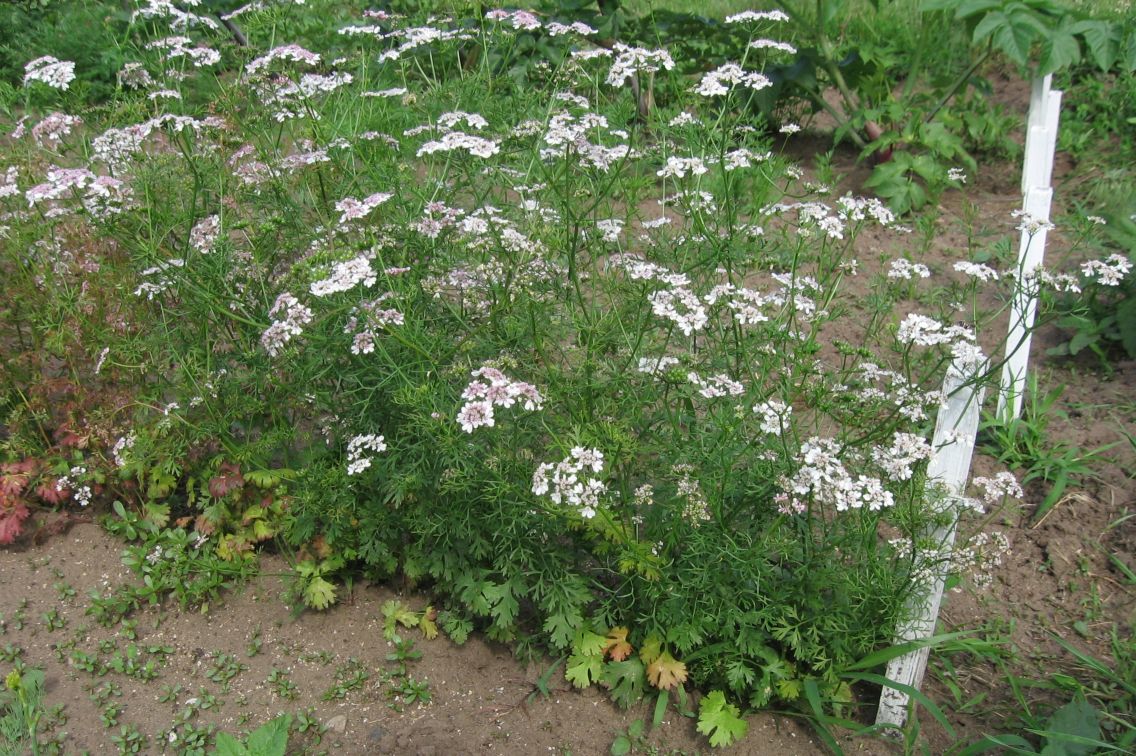Coriandrum sativum L. – Coriander, Chinese parsley

Coriandrum sativum is an annual, herbaceous plant belonging to the Apiaceae family (Th.) Two varieties are known worldwide, both cultivated. The Moroccan coriander (C. sativum var. vulgare Alef. ), which has large (3-6 mm) achenes, is rare in Europe. The other variety with smaller fruit size (1.5-3 mm) is C. sativum var. microcarpum DC., which is cultivated through Central- and Eastern Europe. The roots are branched, pale-like; the stems are 20-150 cm tall. The leaves are variable in shape, broadly lobed with long stalk at the base of the plant, and thin, feather-like upper on the flowering stems. The flowers bloom in compound umbels, the petals are pale pink, the plants start flowering in the beginning of June. The fruit is light brown, globular, dry schizocarp. Thousand seed weight: 5-7 g.
Coriander originates from the Eastern Mediterranean. The plant development is effected by temperature: for the seed germination 15oC is optimal, but the vegetative development is better on low temperature. During the seed ripening 18-19oC is needed. Coriander grows easily on soils with high water capacity.
The ripe fruit of the plant (Coriandri fructus) is official in the Hungarian Pharmacopoeia VIII. The high quality drug contains at least 3 ml/kg essential oil according to the standards. The essential oil of coriander (Coriandri aetheroleum) is in trade, too.
Every overground part of the herb accumulates essential oil (fresh shoots 0.036 %, fruits 0.38 %). The main components in the shoots are linalool, decen-(2)-al, dodecen-(2)-al, in the fruits linalool is dominates. The ripe achenes accumulate fatty oils, proteins, vitamin A and C, gamma sytosterin, flavonoids and triterpenes as well.
Coriander drug is efficient in healing digestive disorders, distension and loss of appetite. It has been used for a long time and is an important compound of galenicums. As a spice, coriander is a popular material of canning industry; the essential oil is also used in the food and cosmetic industry.

